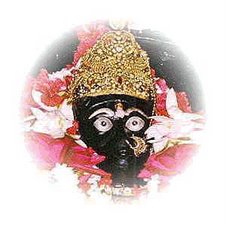It took minutes for the top guns to swing into action when the Sensex fell by several hundred points. But no Minister came forward to calm the nation when India hit the 94th rank in the Global Hunger Index.
It all happened around the same time. The day the Sensex crossed 19,000, India clocked in 94th in the Global Hunger Index — behind Ethiopia. Both stories did make it to the front page (in one daily at least). But, of course, the GHI ranking was mostly buried inside or not carried at all that day. The joy over the stunning rise of the media’s most loved index held on for a bit the next day. The same day, India clocked in as the leading nation in the number of women dying in childbirth. In this list, the second, third and fourth worst countries put together just about matched India’s 1.17 lakh deaths of women in childbirth. This story appeared in single column just beneath the Sensex surge.
Next came the fall of several hundred points in the Sensex. That is, barely a couple of days later. It took minutes for the top guns to swing into action. Fingers were in every dyke. Finance Minister P. Chidambaram lost no time in reassuring worried investors via the media. Other top officials were all over television, doing the same. “FM soothes the Market’s nerves” ran the ticker. The barrage — both media and official — kept up through the day. The panels of experts convened to celebrate the 19K summit were reconvened to explain why they’d tripped off the cliff. They then droned on about the merits of P-Notes, regulation and the future. What stood out, of course, was the swiftness of both government and media response to each twitch in the index.
No Minister came forward to calm the nation when India hit the 94th rank in the Global Hunger Index. That’s out of 118 countries. The daily, DNA, though, did capture the essence of the story with its report: “Ethiopians manage hunger better than us.” For indeed, they do these days. At least by the measure of the International Food Policy Research Institute’s Global Hunger Index. Ethiopia ranks a notch above us at 93. Draw the baseline anywhere in the 1990s, and you’ll find Ethiopia worked better at reducing hunger than we did. Pakistan ranks ahead of us, too, at 88. China logs in at 47. All our South Asian neighbours do better than us on this index, except Bangladesh. And who knows when it will overtake us? None of the countries boasts an economy growing at 9 per cent a year.
You’d think it was an issue worth some attention. But it was hard to find panels debating this on television. Or any editorials in the newspapers doing the same. No Ministers or top babus soothing the nerves of the hungry. No experts with furrowed brows warning that the trends could continue, even worsen.
The GHI is by no means the only measure of what’s happening. The United Nations’ Food & Agriculture Organisation put it simply in 2006. Its State of Food Insecurity in the World report confirmed yet again that we have the largest number of undernourished people in the globe. The 2004 edition of the report had shown that India had added more people to the “newly hungry” in the planet than the rest of the world together. There, too, nations much worse off had done far better. Between the years 1995-97 and 2000-02, hunger grew in India at a time when it fell in Ethiopia.
There was also another link begging to be made. Not just between the Sensex and hunger stories. Let’s revert to the latest maternal mortality figures released by the WHO and others. Some 536,000 women died in childbirth in 2005. Of these, every fifth one of them, at least, was an Indian. That is, 117,000 of them. A total that could only be matched by Nigeria, Afghanistan and Congo together. Almost 99 per cent of all these deaths worldwide occurred in developing countries. Much of this, again, is amongst the poorer sections of the population.
If we were to look at specific groups or communities, this would be even clearer. Let alone on the hunger index, India’s rank in the U.N.’s Human Development Index is anyway dismal. There, at 126, we are below Bolivia, Guatemala and Gabon. Yet even that rank does not tell the full story. If we were to isolate the rich and the better off as a group, they might enter the top 10 nations. Efforts last year to look at adivasis as a group led pretty much in the reverse direction. One study found that if we were to derive the HDI for our tribes only, they would rank in the worst off 25 nations of the world.
P.Sainath
Please read the full article at http://www.thehindu.com/2007/10/26/stories/2007102653981200.htm
Subscribe to:
Post Comments (Atom)







No comments:
Post a Comment